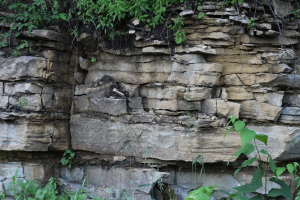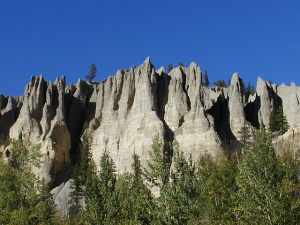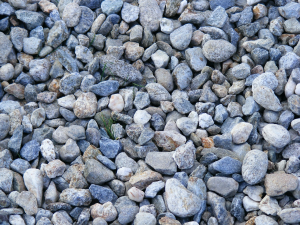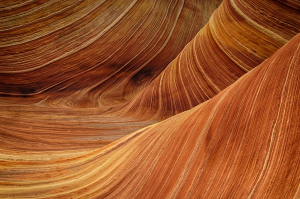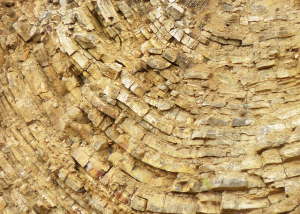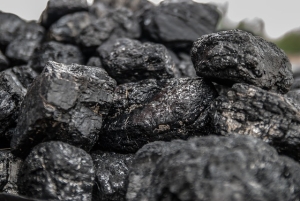Sedimentary Rocks
Let’s learn some facts about Sedimentary rocks! At the end of the article, review our quiz sheet in the activity section to test what you have learned.
To geologists, people who study rocks, soil, fossils, mountains and earthquakes, a rock is a natural substance that is made up of solid crystals of different minerals that have been fused together into a solid lump.
The minerals may or may not have been formed at the same time. What matters is that natural processes that glued them all together.
Sedimentary Rocks
Sedimentary rocks, fascinating creations of nature, form in various captivating places across our planet. These geological wonders take shape in environments where sediments, like sand, mud, and even organic matter, settle and gradually compact over time.
The gentle caress of a flowing river carries fine particles downstream, depositing them in riverbeds, forming sedimentary layers over centuries. Mighty oceans play their part, too, with waves and tides sculpting coastal areas, leaving behind layers of sand and shells that solidify into sedimentary rocks. The little pieces collect in low-lying areas by lakes, oceans, and deserts.
Don’t forget the ancient lakes, where layers of sediment slowly accumulate, preserving the secrets of bygone eras. So many stories etched in stone, just waiting to be uncovered!
Where Can Sedimentary Rocks Be Found?
Sedimentary rocks, those magnificent geological formations that hold stories of the Earth’s past, can be found in a myriad of enchanting locations across our planet. From the rugged canyons of the American Southwest to the picturesque coastal cliffs of England, these rocks reveal the passage of time like pages in a captivating novel.
Delicate layers of sandstone whisper tales of ancient deserts, while limestone formations echo the ancient seas that once covered vast regions. Venture into the heart of the Grand Canyon or explore the towering cliffs of the White Cliffs of Dover, and you’ll witness the beauty and history locked within these mesmerizing sedimentary treasures.
What Are The Different Types Of Rocks?
There are three basic types of rocks including igneous, sedimentary, and metamorphic.
Sedimentary are the most common rocks that we see across the Earth’s surface but form only a small part of the entire crust when compared to igneous and metamorphic rocks.
How Are Sedimentary Rocks Formed?
When mountains are first formed, they are tall and jagged like the Rocky Mountains of North America.
Over millions of years mountains become old mountains like the Appalachian Mountains of Canada and the United States.
When they are older, they are more rounded and quite a bit lower.
As mountains age lots of rock gets worn away by erosion, which is from rain, snow, wind and running water. The big mountains crumble one little bit at a time.
Eventually most of the broken bits of the rock end up in streams and rivers that flow down the mountains.
These little bits of rock and sand are called sediments.
When the water slows down enough, they settle in layers on the bottom of lakes or oceans they run into.
Each layer is like the page of a book. One piece of paper is not heavy.
But a stack of telephone books is very heavy and squishes anything underneath.
Over time the layers of sand and mud at the bottom of lakes and oceans turns into rocks called sedimentary rocks.
You can tell sedimentary rocks by their layers, which tells us the following:
- What the conditions were when they were deposited?
- What they were made from e.g. minerals, organisms or small pieces of plants?
- Which fossils are most frequently found in sedimentary rock?
- How they got there?
Sedimentary rocks can be formed only where sediments are deposited for long enough to become cemented into hard beds or strata which are often seen on exposed cliffs.
Types Of Sedimentary Rocks
There are six main types of sedimentary rocks.
- Sandstone is a soft stone made when sand grains cement together. Sometimes the sandstone is deposited in layers of different colored sand.
- Shale is clay that has been hardened and turned into rock. It often breaks apart in large flat sections.
- Limestone is rock containing many fossils and made of calcium carbonate and/or very tiny shells. When subjected to heat and pressure over time it forms metamorphic rock which is marble.
- Chalk is a soft, white form of limestone.
- Gypsum is a common white or colourless mineral used to make cements and plasters.
- Conglomerate rock has rounded rocks like pebbles and boulders cemented together in patterns of lines and spaces.
- Breccia has jagged bits of rock cemented together in patterns of lines and spaces.
Here are some other examples of Sedimentary rocks.
Fossil fuels are coal, oil and natural gas.
These were formed hundreds of millions of years ago from the remains of living organisms and before the time of the dinosaurs – which is why they’re called fossil fuels.
Coal is a black color and a non-renewable energy source, which means that one day it will run out.
Around 300 million years ago the world was covered with tropical swamp forest. When these plants died they fell into the swampy earth and over time were buried.
Over millions of years they were changed into coal by pressure from the layers of rock above them. Coal is burned to heat water and produce steam.
Fossil fuels create greenhouse gases when burned, which contributes to global warming and too much global warming is not a good thing at all for our planet.

What Are Sedimentary Rocks With Fossils
Sedimentary rocks with fossils provide valuable glimpses into Earth’s ancient history. These rocks form through the accumulation and consolidation of sediments over time. Fossils, preserved remains, or traces of once-living organisms are embedded within these layers.
They serve as remarkable records, offering insights into past life forms and ecosystems. Sedimentary rocks can harbor diverse fossils, ranging from intricate shells and skeletal structures to imprints of plants and tracks of ancient creatures. By studying these rocks, scientists unravel the mysteries of prehistoric life, trace evolutionary patterns, and reconstruct the Earth’s environmental conditions millions of years ago.
Biochemical & Organic Sedimentary Rocks
Biochemical sedimentary rocks are formed from the accumulation and lithification of organic materials, such as shells, coral, and plant remains. These rocks, including limestone and chalk, are primarily composed of aragonite and calcite minerals.
On the other hand, organic sedimentary rocks are derived from the accumulation and compression of organic matter, such as peat and coal. These rocks, like coal, are rich in carbon and formed from the remains of ancient plants. Both types of sedimentary rocks provide valuable insights into Earth’s history and are important sources of economic resources, including fossil fuels and building materials.
More Facts About Sedimentary Rocks
Sedimentary rocks are very important in helping us to find clues about the Earth’s past. Lucky we’ve got them then.
Most of chemical sedimentary rocks come from minerals left behind by evaporated water! Wow.
Table salt actually comes from a chemical sedimentary rock called halite. Who would have thought!
Frequently Asked Questions
1. Why are most fossils found in sedimentary rocks?
Most fossils are found in sedimentary rocks because these rocks are formed through the accumulation of sediment, such as sand, silt, and mud, which can quickly bury and preserve organic remains. Over time, the layers of sediment compact and harden, preserving the fossils within them for millions of years.
2. What color are sedimentary rocks?
Sedimentary rocks can come in a wide range of colors due to the varied composition of their sediments. Common colors include shades of gray, brown, red, yellow, and white. The color of a sedimentary rock is influenced by the minerals present, organic matter, and other factors such as oxidation and weathering.
3. Do sedimentary rocks have layers?
Yes, sedimentary rocks typically have layers or strata. These layers are formed over time as sediments, such as sand, mud, and organic matter, accumulate and compact. Each layer represents a distinct period of deposition and can provide valuable information about Earth’s history and past environments.
Conclusion
In conclusion, sedimentary rocks are fascinating geological formations that provide us with valuable insights into Earth’s history. We have explored the formation processes, types, and characteristics of sedimentary rocks, highlighting their importance in understanding past environments and the evolution of life. From the deposition of sediments to the compaction and cementation processes, each step contributes to the creation of unique rock formations such as sandstone, limestone, and shale.
By studying sedimentary rocks, scientists can unravel the mysteries of ancient ecosystems, climate change, and geological events that have shaped our planet over millions of years. These rocks are a remarkable record of Earth’s dynamic past, providing a window into the wonders of geological history.
Activity Time – Test Your Knowledge!
Take a quiz on this subject using our activity sheet: Questions about Sedimentary Rocks (all answers found on this page).

